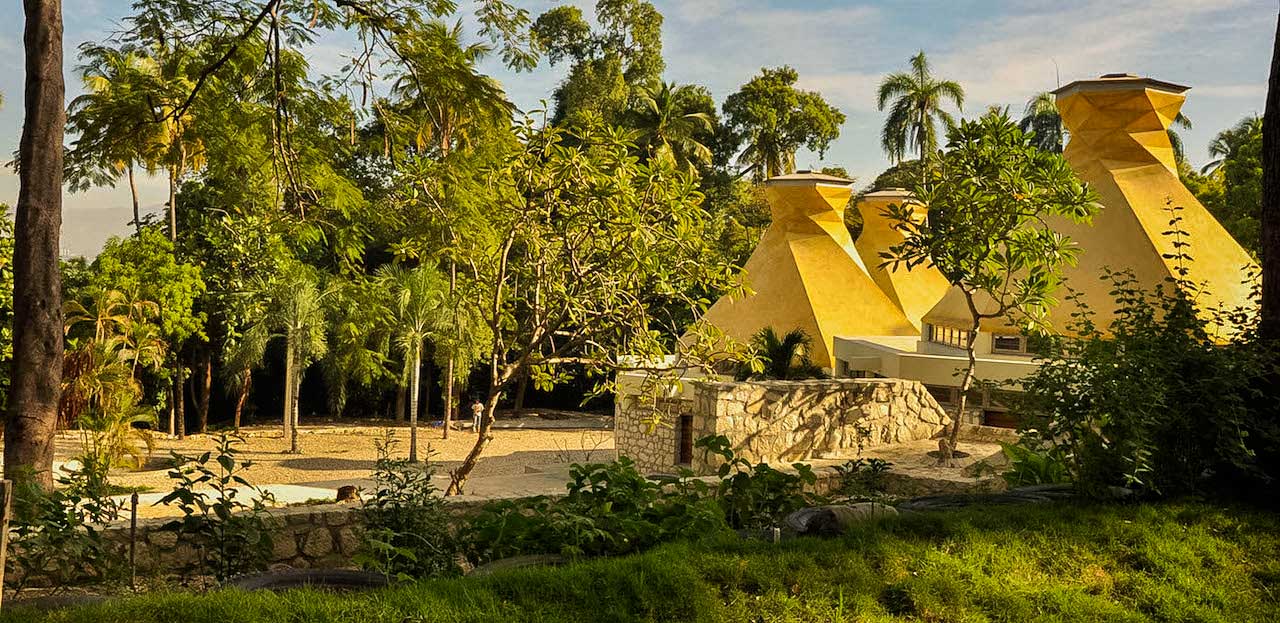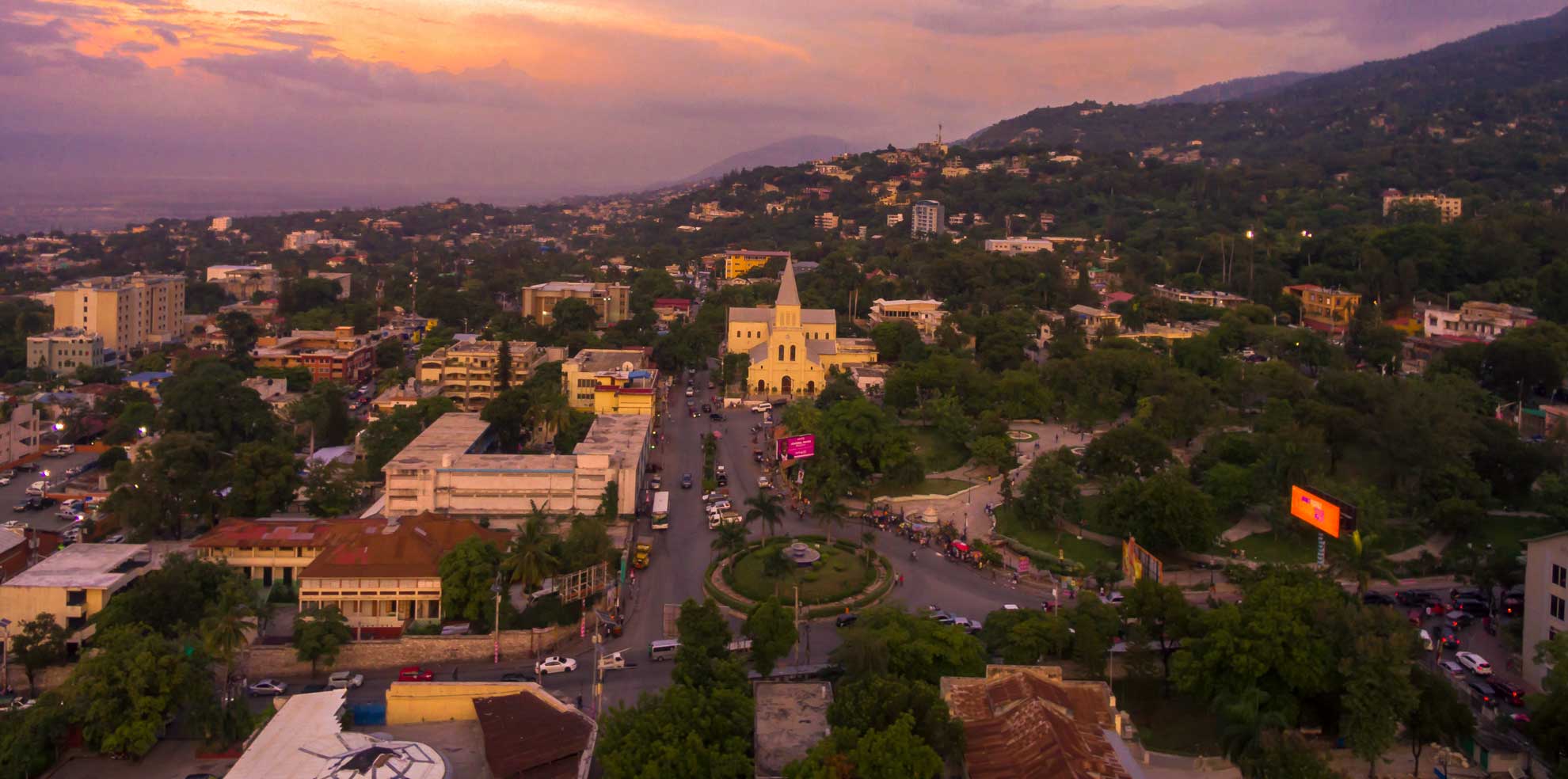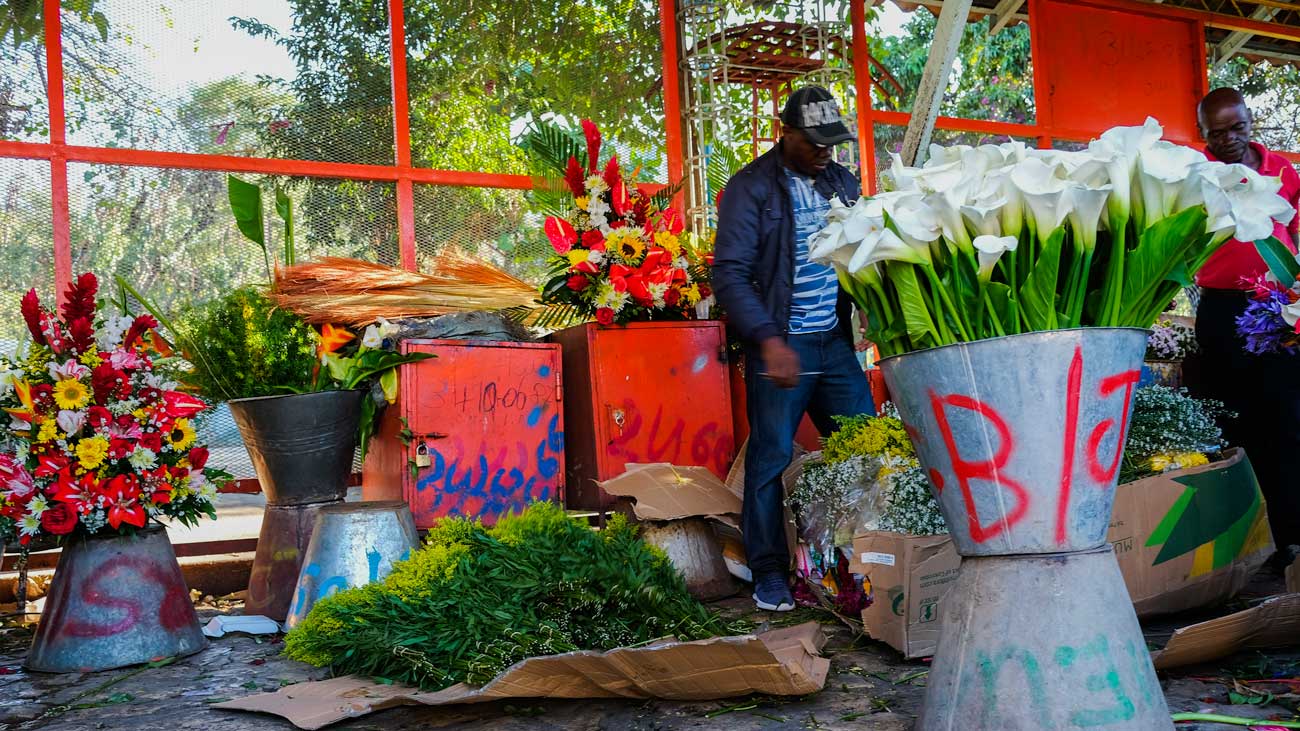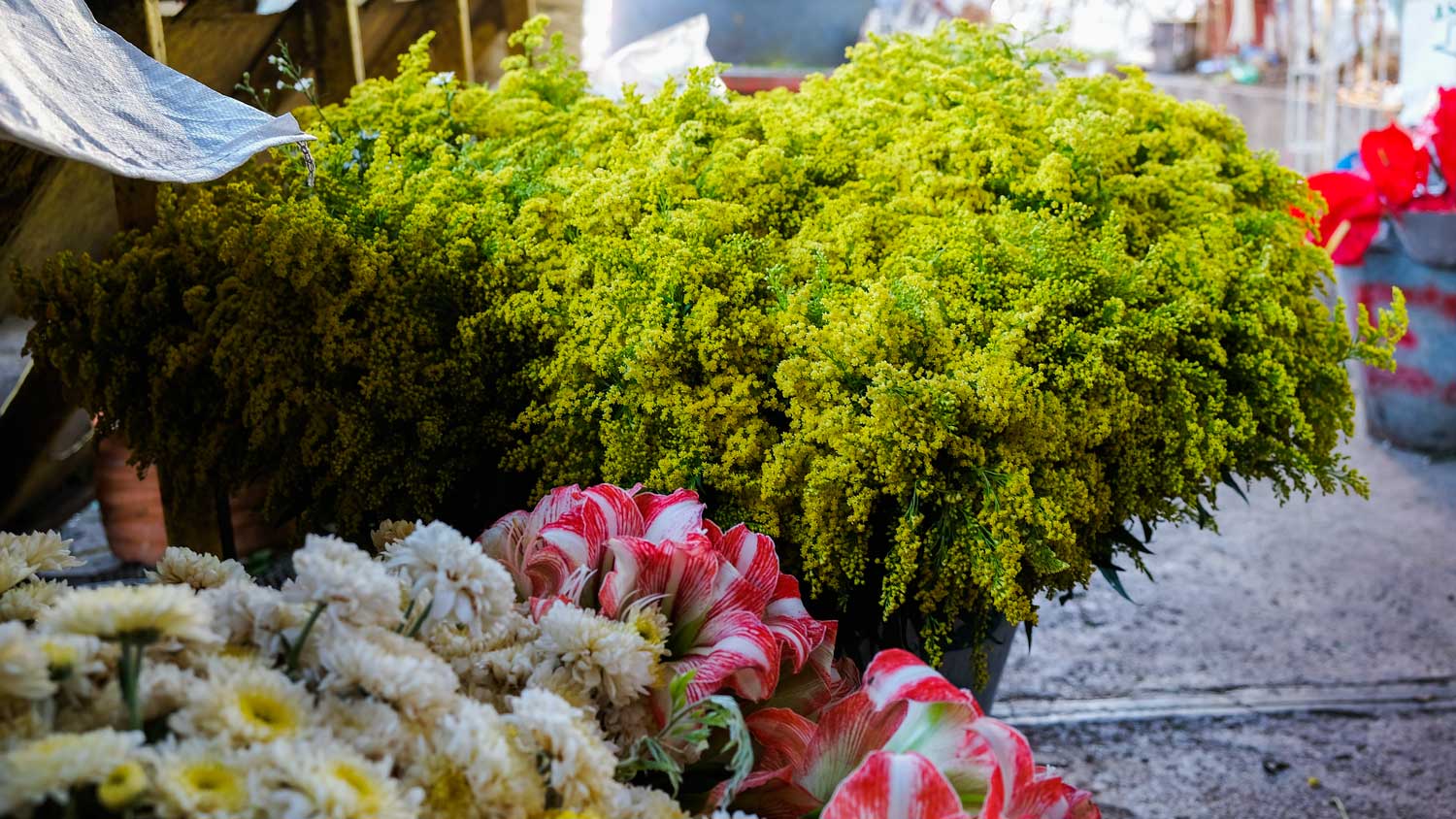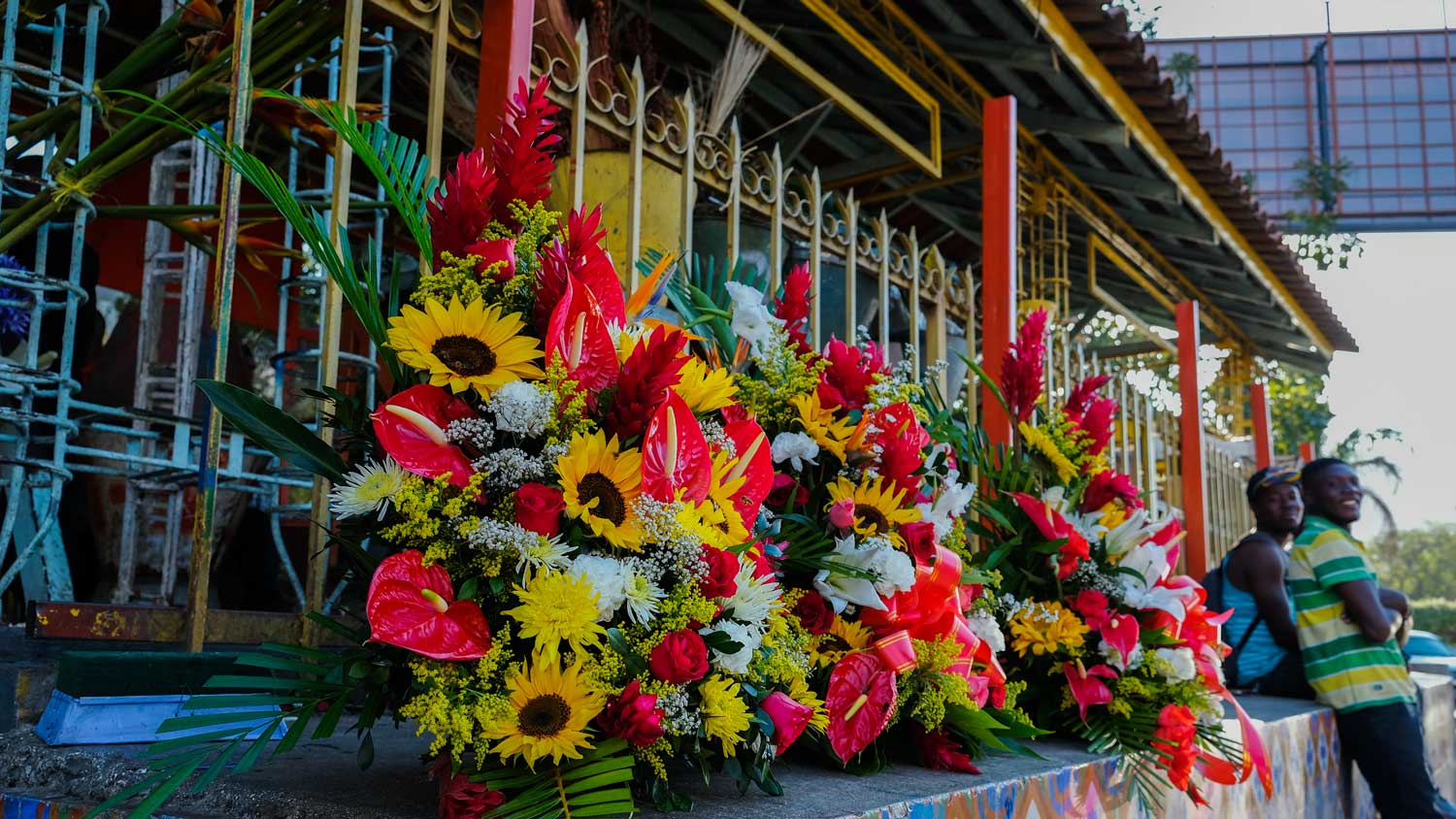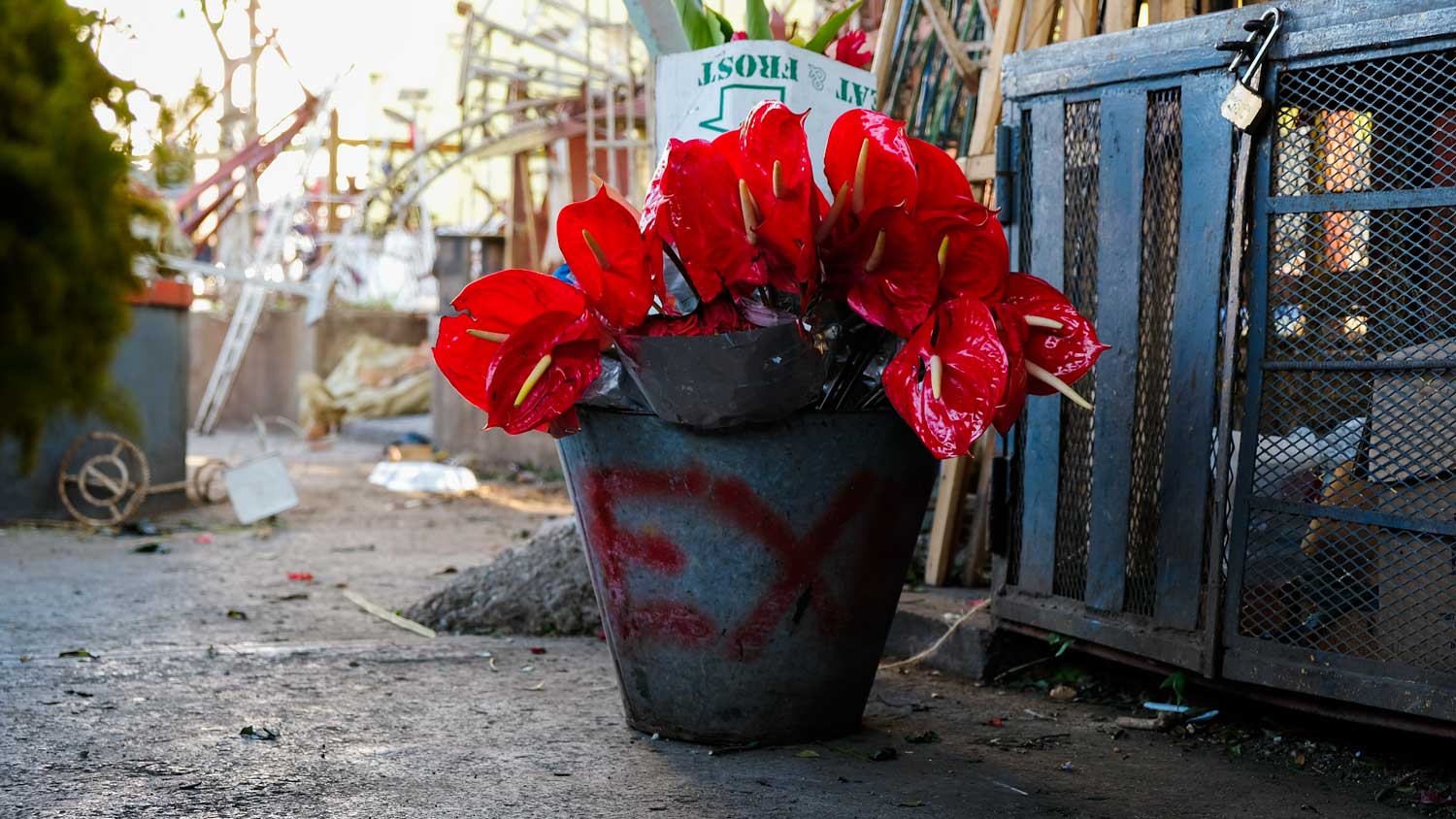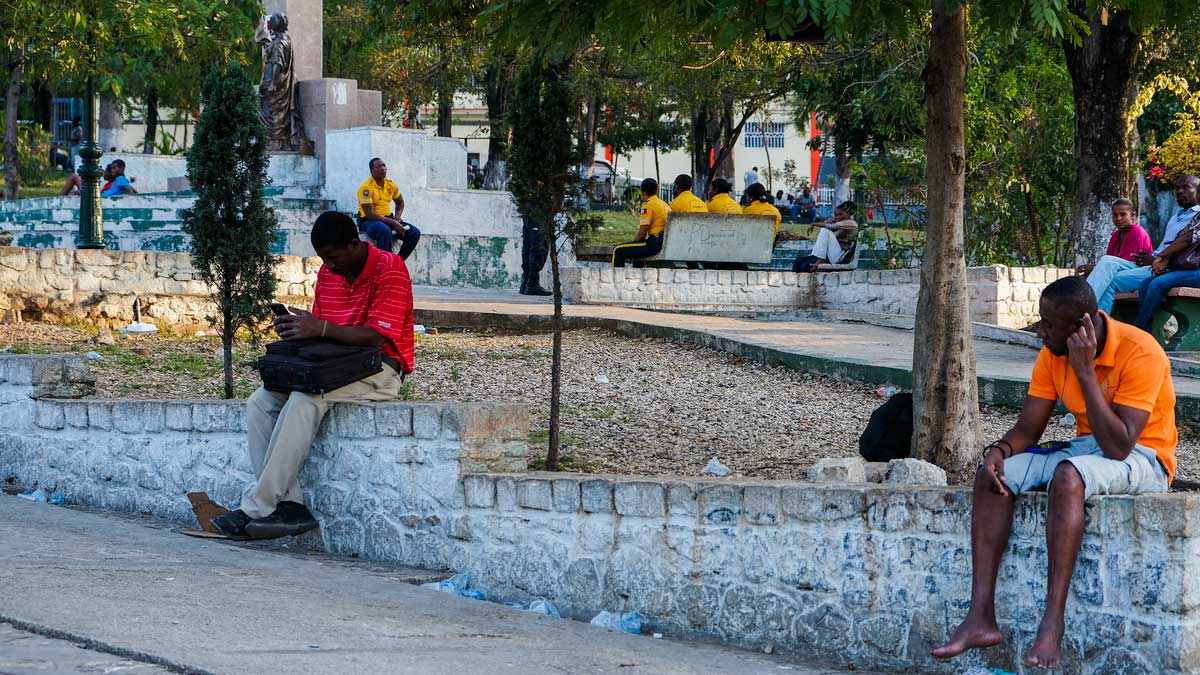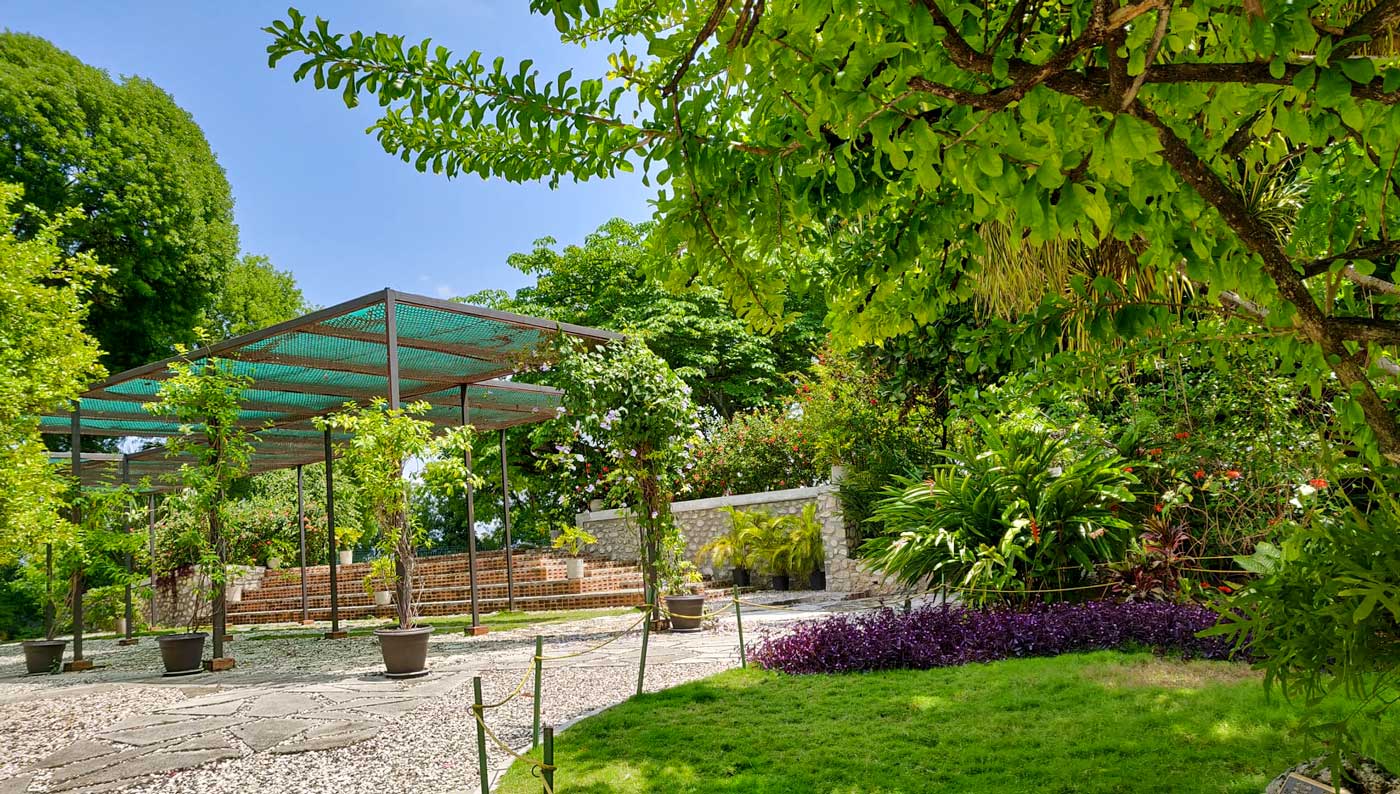
Photo: FOKAL
Parc de Martissant
This park houses gorgeous flowers, medicinal plants and the Haitian home of the ‘matriarch of black dance’.
Created in 2007 by joining together four huge estates, the Parc de Martissant provides public oasis where people can relax, share skills and culture. Students and tutors from nearby schools are often found wandering in the park, reading or chatting together. The second central aim of the park is to preserve Haiti’s beautiful native flora.
Year round, the garden is bursting with tropical sights and smells: pink and yellow frangipani, hibiscus, red ginger (or ginger lily), spider lily, the exotic ‘lobster-claws’ flower and dozens of others we didn’t know the name of.
Stroll through lush rolling lawns, roped paths, feature trees, flower guilds and wooded groves circumscribed by stone walls, natural amphitheatres and outdoor galleries as well as three separate groups of buildings, most notably the Katherine Dunham Center.
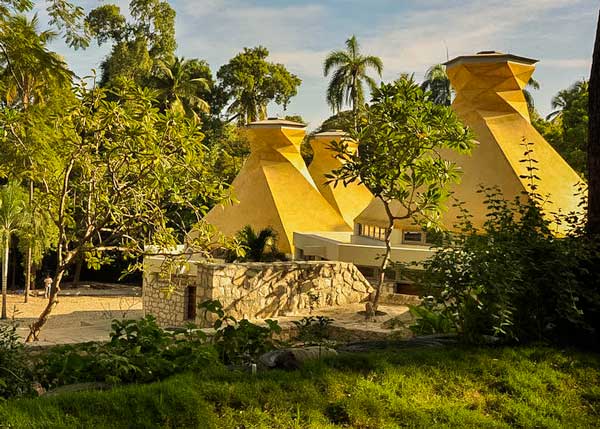
Photo: FOKAL
The Katherine Dunham Center
The Center was once the residence of African-American dancer and choreographer Katherine Dunham, the ‘matriarch of black dance.’ In 1935, Dunham obtained travel fellowships to the Caribbean to further her studies on dance and vodun – or vodou – leading her straight to Haiti.
Here, she spent an extensive amount of time researching, learning, and developing her own dance method. After Dunham passed away in 2006, her property was transformed into a cultural center, and now features an iconic library, whose five buildings – built to emulate movements of dance – were designed by Mexican architects Raúl Galvan Yañez and Winifred Jean Galvan. This library is a hive of activity for students and fans with cultural activities, public readings and more each week.
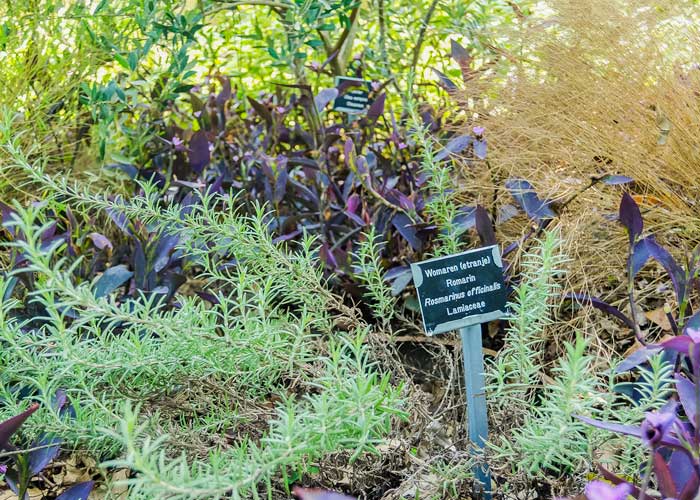
Photo: Ray Ginald / FOKAL
The medicine garden
The Centre is also where you’ll find guides willing to show you around Parc de Martissant’s extensive garden of medicinal plants. The tour is very detailed, and guides are always more than happy to answer questions, but visitors are free to walk around and observe by themselves if they prefer.
Depending on the time of year, some of the plants are blossoming or yielding fruit. The medicinal plant garden sits adjacent to a community produce garden, whose bounty is gathered whenever it is ripe and made available to the local community.
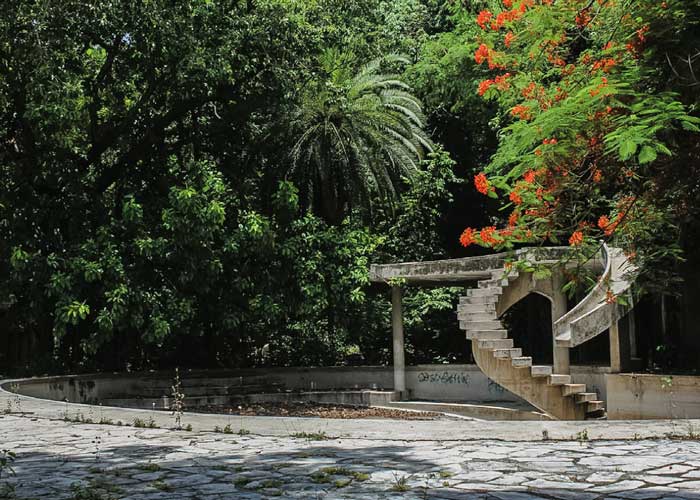
Photo: FOKAL
Habitation Leclerc
Elsewhere in the park’s 17 acres, you’ll find a former luxury hotel called Habitation Leclerc. In the sixties and seventies, the villas with private pools of Habitation Leclerc was a point of reference for the jet-setting elite of the world.
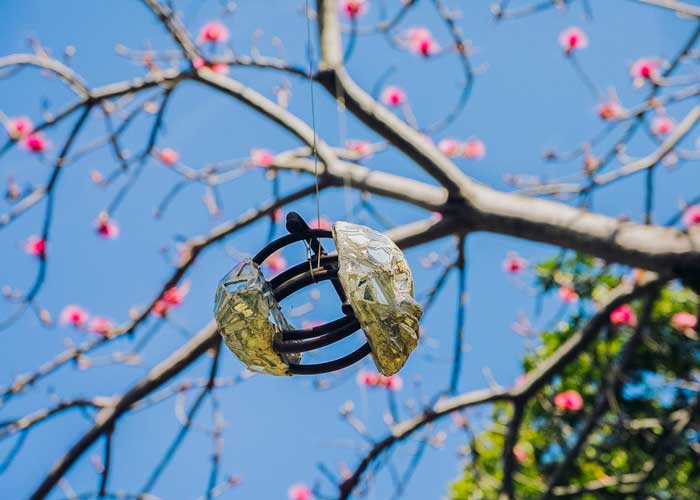
Photo: Valérie Baeriswyl
The earthquake memorial
The third major installation of Parc de Martissant is the January 12 2010 Memorial. It was built on the former residence of Haitian architect Albert Mangonès – the sculptor behind the Marron inconnu or Nèg mawon statue at Champ-de-Mars.
Erected in 2012, the memorial is a symbolic resting place for the souls of those who passed away during the 2010 earthquake. Residents of Martissant planted ylang ylang trees on the perimeter of the memorial and every afternoon the trees’ scent is released throughout the area at a similar time to that of the deadly earthquake in 2010.
The memorial also features a permanent art installation by Haitian artist Pascale Monnin. Skulls made from iron and cement covered in mirror shards hang from a giant tree, twisting and swinging in the wind. Monnin shaped and crafted these skulls based on the faces of residents of Martissant. From the early hours of morning into the late afternoon, they catch and reflect the Caribbean sunlight.
How to visit
The best time to visit the park is in the morning. The ravaging heat of Martissant will not yet be in full effect, and the park is still waking up.
The park is designed with an organic flow in mind – while there isn’t always designated seating, there are low walls or stairs where visitors often sit and hang out.
Guided tours at Parc de Martissant are paid. Children under 6 years of age enter free of change; those between 7 and 18 years old pay 25 gourdes, and people over 18 years of age pay 50 gourdes. The spaces that are currently open for touring are the January 12 2010 Memorial, the Katherine Dunham Cultural Center, and the medicinal plant garden.
If you are planning to visit the center, it is worth noting that the guided tours are in Haitian Creole – therefore, having a bilingual friend or guide to tag along is a good idea! If you visit during the summer, you will greatly benefit from making a reservation in advance, as the tour guides tend to be quite busy during that time of the year with group excursions.
Written by Kelly Paulemon.
Published December 2020
Top things to see in Haiti

Paradise for your inbox
Your monthly ticket to Haiti awaits! Get first-hand travel tips, the latest news, and inspiring stories delivered straight to your inbox—no spam, just paradise.






